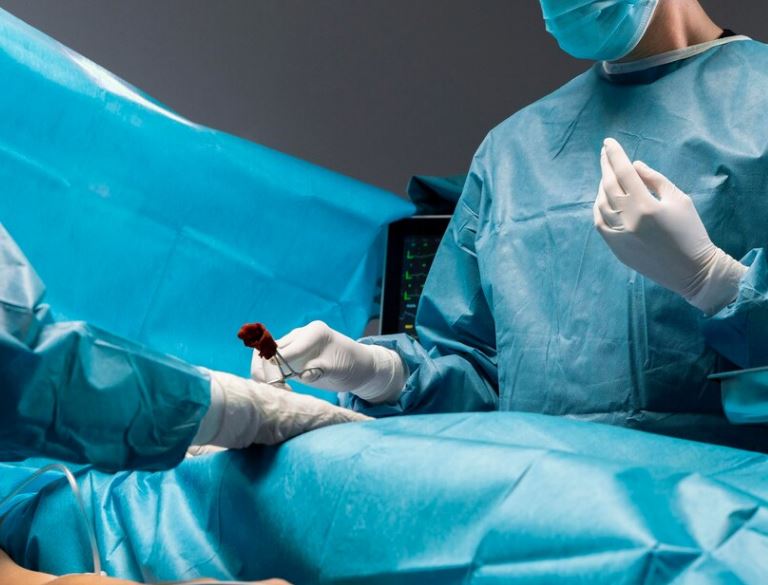
Perianal abscess surgery stands out as a remarkably effective treatment for an exceptionally uncomfortable condition in the world of minor surgeries with major benefits. Although it’s not glamorous or frequently discussed, an abscess close to the anus can change a person’s life if they live with the excruciating pain.
In essence, a perianal abscess is an infection filled with pus that develops close to the anus and frequently manifests as a red, swollen, and excruciatingly painful lump. Although it might initially look like a big pimple, the pressure underneath, the risk of infection, and the impact on day-to-day living can be enormous. This is where surgical drainage comes in, providing both short-term and long-term relief.
Key Information on Perianal Abscess Surgery
| Category | Details |
|---|---|
| Condition | Perianal Abscess |
| Surgical Name | Incision and Drainage (I&D) |
| Procedure Type | Outpatient; can be done under local or general anesthesia |
| Purpose | Drain pus, relieve pressure, prevent complications |
| Duration | 20–40 minutes |
| Recovery Time | 1–2 days for normal activities; 3–4 weeks for complete healing |
| Complications | Recurring abscess, fistula formation, rare fecal incontinence |
| Post-op Care | Sitz baths, pain management, wound dressing, hygiene |
| Risk Factors | Crohn’s disease, STIs, diabetes, immune suppression, poor hygiene |
How a Painful Emergency Is Caused by a Clogged Gland
Imagine that there are dozens of tiny glands in the anus that are meant to keep everything functioning properly. But bacteria grow rapidly when just one of those glands gets clogged. The outcome? It feels like sitting on a knife edge—a tender, infected lump.
Infections, trauma, inflammatory bowel disorders like Crohn’s, and even sexually transmitted infections can cause the illness. Furthermore, surgical drainage is still the gold standard of care, even though warm compresses may momentarily reduce discomfort.
The Procedure: Easy, Quick, and Extremely Effective
Depending on the size and depth of the abscess, surgeons use either local or general anesthesia to drain the accumulated pus through a tiny incision. Usually, the cavity is packed and left open so that it heals from the inside out. This promotes the formation of new, healthy tissue and stops re-infection.
This 30-minute process provides a nearly instantaneous reduction in pain for many. A strong recommendation for a procedure that is frequently postponed out of embarrassment or fear, one patient characterized the post-op feeling as “relief you could feel from the inside out.”
Recuperation: Not as Terrifying as It Seems
Recovery from perianal abscess drainage is surprisingly quick, in contrast to other surgeries. Most patients resume their regular activities within 24 to 48 hours, albeit cautiously. Healing is accelerated by warm sitz baths, changing wound dressings, and using mild stool softeners.
Patients greatly lower their risk of recurrence by incorporating dietary fiber and regular hygiene. When post-operative care is closely monitored, complications are uncommon, but the healing process may take a few weeks overall.
Possible Issues—and the Reasons They Are Seldom Seen
Although some people worry about problems like incontinence or fistula formation after surgery, these are extremely uncommon. The American Society of Colon and Rectal Surgeons states that the majority of complications only occur when there are underlying medical conditions or when the abscess is not treated for an extended period of time.
Surgery has a great prognosis when done early. The sooner an abscess is treated, the less likely it is to develop a more complicated fistula, which would necessitate further surgery, according to surgeons.
A Remarkably Inexpensive and Life-Improving Operation
Compared to managing chronic diseases, perianal abscess surgery is especially cost-effective in the context of contemporary healthcare. It only requires a targeted incision, appropriate drainage, and careful aftercare—neither costly implants nor months of therapy are needed.
The cost-benefit ratio is extremely favorable for many. It is a one-time procedure that frequently improves quality of life in a matter of days rather than weeks.
The Bigger Picture: The Significance of Prompt Action
More complex abscesses requiring more sophisticated intervention increased during the pandemic as a result of postponed surgeries brought on by anxiety about hospital stays. Since then, the importance of early diagnosis and treatment has been highlighted in awareness campaigns.
Providers aim to cut down on delays by incorporating improved education at the primary care level. Promoting candid communication among patients, even when discussing uncomfortable symptoms, can result in a much quicker recovery and less financial strain on healthcare systems.
Accepting Stigma-Free Discussions in Medical Fields
Public health professionals support increased openness regarding anorectal problems in the years to come. Perianal abscesses should be treated with the same respect and urgency as mental health and reproductive issues, which we have normalized.
Despite being uncomfortable to talk about, these conditions are a part of a broader story about healthcare literacy and bodily autonomy. An empowered patient is one who is well-informed, and early surgical intervention is evidence that a minor action can avert a serious issue.
FAQs About Perianal Abscess Surgery
Is perianal abscess surgery painful?
Not during the procedure—anesthesia ensures comfort.
How long is the recovery?
Most people resume daily tasks within 1–2 days.
Can it come back?
Yes, but good hygiene and proper treatment reduce the risk.
Is it dangerous if untreated?
It can lead to serious infections or fistula formation.
Do I need a hospital stay?
Typically no—it’s often done as an outpatient procedure.
